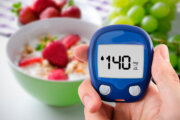May is stroke awareness month. It’s important that people of all ages know the signs and symptoms of stroke.
This can be remembered with the acronym BE FAST:
— Balance.
— Eyes.
— Face.
— Arm weakness.
— Speech difficulty.
— Time to call 911.
[READ: Stroke vs. Heart Attack: How to Tell the Difference]
Young Stroke Patients on the Rise
An important fact about stroke is that an estimated 10% to 20% of all ischemic strokes occur in young adult’s ages 18 to 50 years old. The incidence of stroke in young adults has been rising over the past two decades, perhaps due to an increase in stroke risk factors such as obesity, high blood pressure, diabetes, high cholesterol and smoking to name a few.
Stroke can affect young adults regardless of gender or race. Women, African Americans and Hispanics have higher rates of stroke compared with men and white people in the U.S.
[Find: The Doctor That Is the Right Fit for You.]
Causes of Stroke in Young Adults
The cause of stroke often is challenging to determine in these young patients. Stroke in young adults can be caused by various mechanisms and include factors such as:
— Cholesterol build up or atherosclerosis due to risk factors like smoking, high blood pressure, high cholesterol, diabetes and smoking.
— Blood-clotting disorders.
— Trauma to a blood vessel in the neck leading to tears in the blood vessels called dissections.
— Structural heart disease or heart valve infection.
— Abnormal heart rhythms like atrial fibrillation.
— Blood vessel abnormality of the brain.
— Inflammation in the blood vessels of the brain.
— Infection that invades blood vessels, as in bacterial, fungal or viral infections or infections that increase blood-clotting risk (COVID-19, for example).
Finding the underlying cause is very important. Despite thorough workup, in many situations the cause of stroke cannot be determined.
[READ: Stroke Rehabilitation: What to Know]
Treatments for Stroke in Young Adults
There are very effective treatments to prevent future strokes and determining the etiology will help to ensure the treatment plan will be effective. In additional to blood thinners, patients are often placed on medications to control blood pressure and cholesterol as well as other treatments to control any risk factors for future stroke.
Lifestyle measures can also have a great impact. Eating a well-balanced diet and engaging in at least one hour per day of good physical activity can have an immense impact in preventing a stroke in the future.
Stroke at this age can be particularly devastating — young patients with stroke often have substantial physical disability, with loss of the ability to function fully in their careers and family life. Fortunately, many patients do recover after stroke. However, even when patients recover from the physical effects of stroke, the psychological impact of surviving a life-threatening illness can result in challenges adjusting to their new reality of life after stroke. People will often feel a new vulnerability and be fearful of future medical issues, which can result in depression and anxiety.
These issues are gaining more recognition in the medical field, and programs for stroke recovery are putting important resources, like health psychologists, in place to assist patients in having a full recovery in the psychological domain as well as the physical. In addition to the patient directly, it’s important to provide resources and support to the caregivers, usually close family members, who can take on a great burden in caring for their loved ones.
Young patients with stroke are a group that deserve specific and special attention, given the huge impact illness can have on themselves, their families and society as a whole. Dedicated programs focused on working up the cause of stroke in these individuals, as well as stroke recovery programs can have profound impact. With recognition of the challenges in caring for stroke in this young population, additional resources and research will help us to allow these patient to recover and emerge stroke from these life-changing events.
More from U.S. News
13 Health Pros and Cons of Aspirin
What Are the Symptoms of Coronavirus?
Stroke in Young Adults originally appeared on usnews.com







